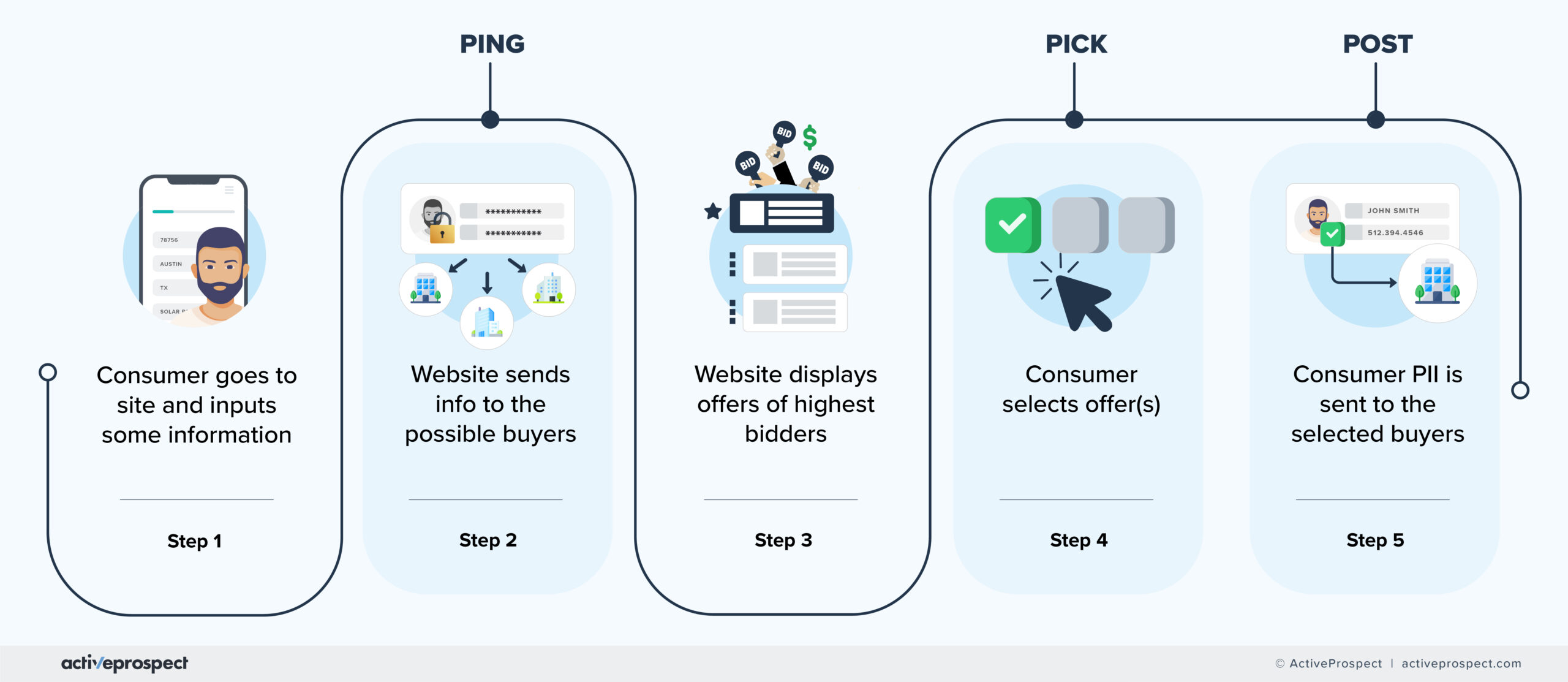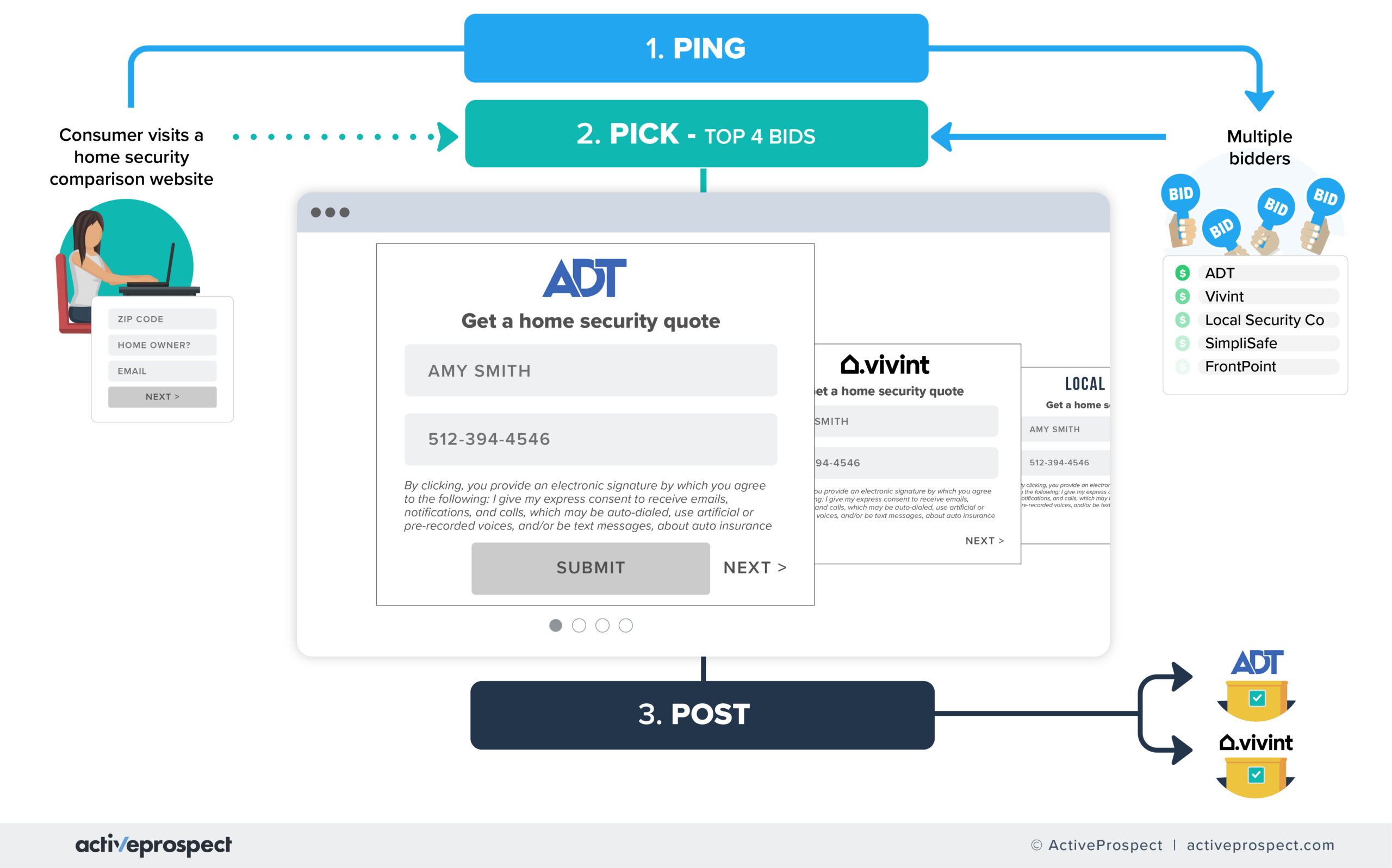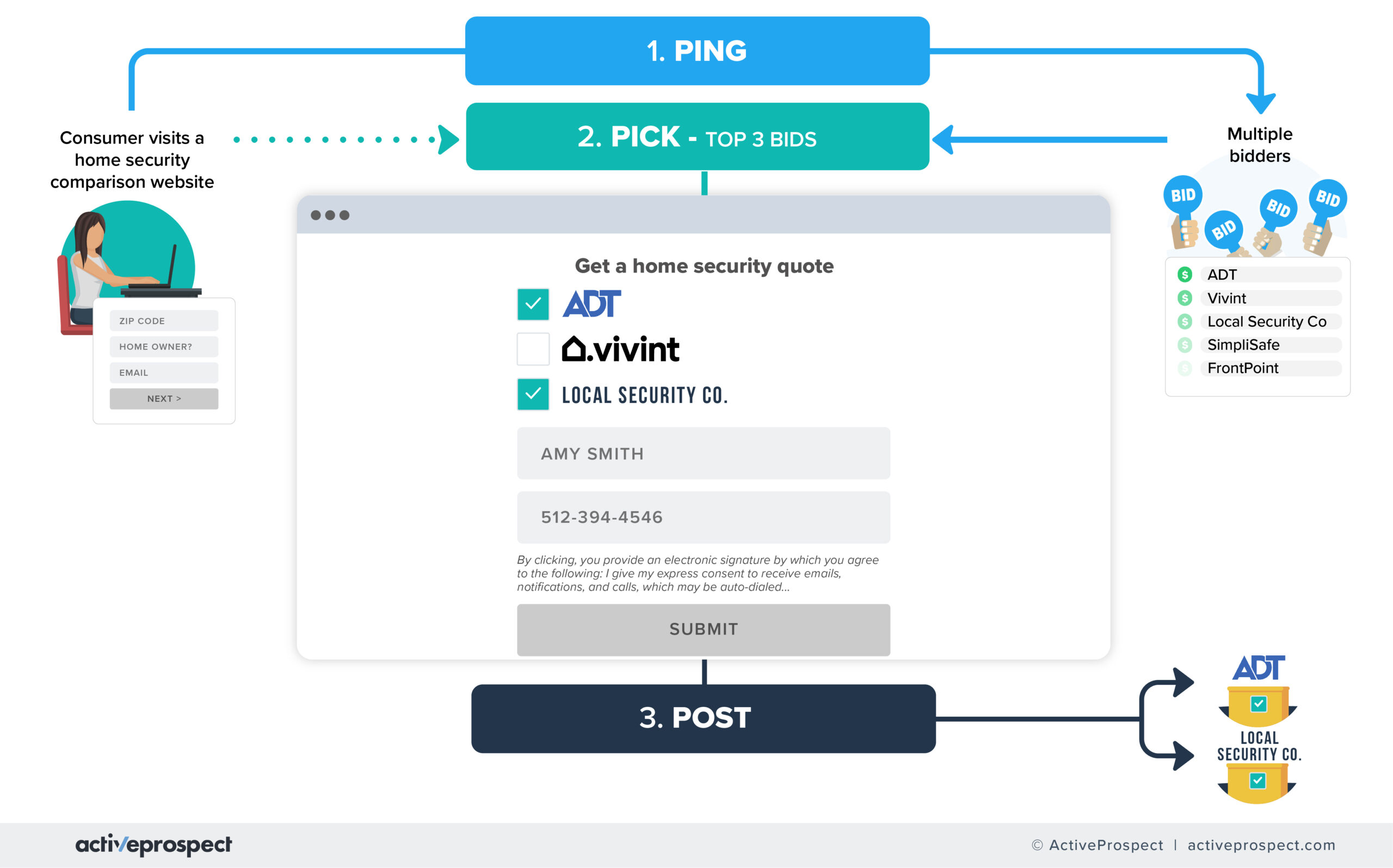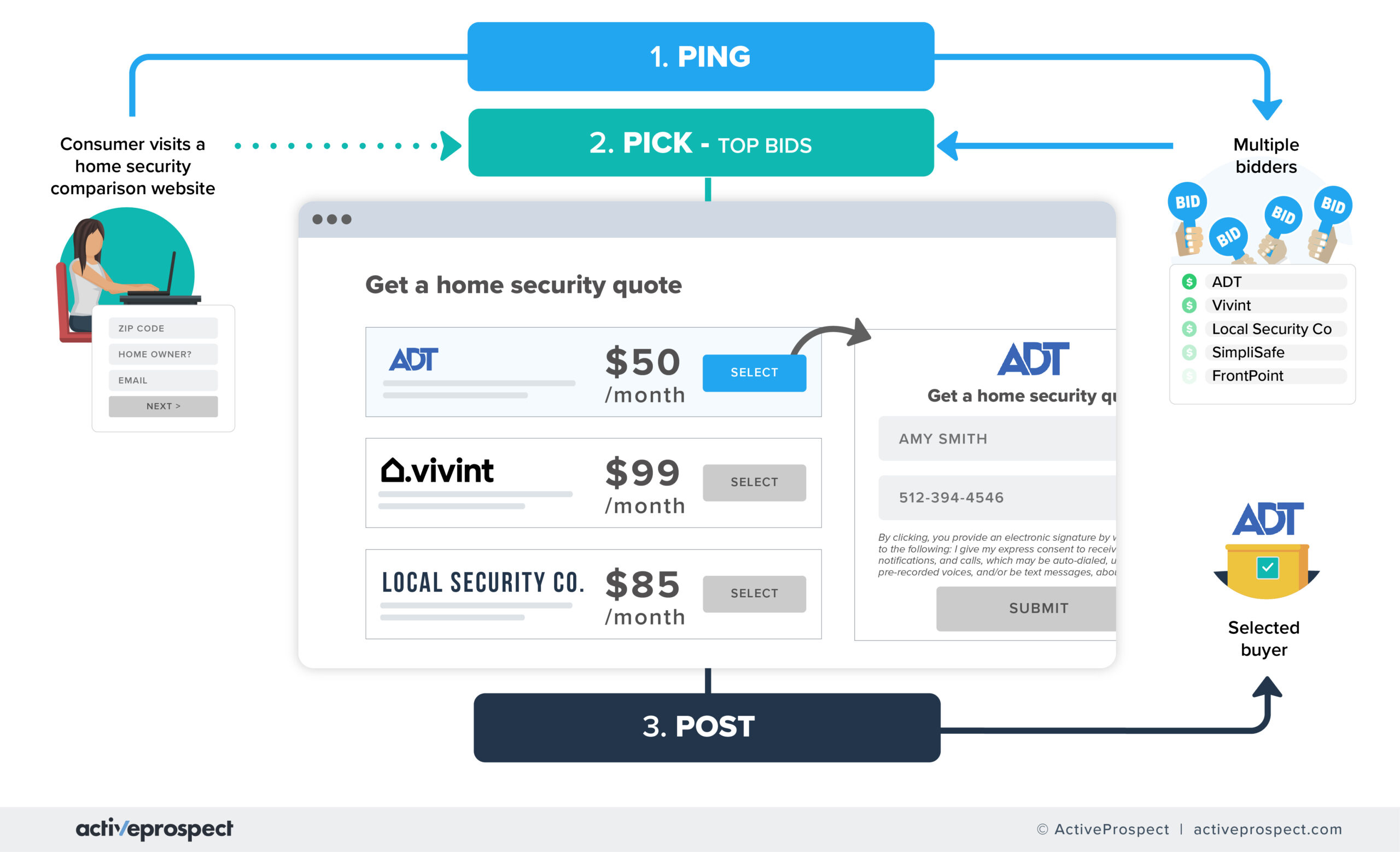"Ping Pick Post"
Proposed solution for the new regulatory landscape

This is our proposed solution for comparison websites to comply with the proposed FCC guidelines for one-to-one consent. We are soliciting feedback from the industry to determine which models we will support. It is a work in progress. We appreciate all feedback!

What is Ping Pick Post?
"Ping Pick Post" definition
Ping Pick Post is an auction-based method of matching and distributing leads from a comparison website. This method involves pinging potential buyers for bids, allowing the consumer to pick the offers they want, and then posting their data to those companies.
The Ping Pick Post methodology
For years, comparison sites have relied on a methodology called Ping Post to distribute leads to the highest bidders. This method relies on multi-party consent, where a consumer agrees to be contacted by any of the potential companies listed on the marketing partner list displayed in the TCPA consent language below the form. With the new proposed FCC guidelines for one-to-one consent, Ping Post is no longer sufficient. Sites must provide a way for consumers to give consent to the specific companies they would like to contact them. The new method that supports consumer choice is called Ping Pick Post. It adds the critical “Pick” step to the old Ping Post model.
Why is Ping Pick Post needed?
BACKGROUND: Comparison Websites
Comparison websites serve an important role in matching consumers with companies that meet their specific needs. There are often tens, hundreds, or even thousands of companies that could potentially serve a consumer’s needs in any vertical. These sites serve a critical role in helping a consumer identify the companies that can service their needs and value their business. Similarly, these sites also play a vital role in helping companies efficiently find customers for their business.
REAL-TIME AUCTIONS: Matching consumers with companies
Comparison sites typically use an auction model to determine which companies will receive the lead of the interested consumer. Companies bid a price per lead for a particular consumer. Unlike programmatic display ad auctions that happen behind the scenes, without any consumer awareness, comparison websites ask consumers to participate in the process by inputting information about their specific needs. These inputs can be compared against the criteria of multiple companies at once.
This is our proposed solution for comparison websites to comply with the proposed FCC guidelines for one-to-one consent. We are soliciting feedback from the industry to determine which models we will support. It is a work in progress. We appreciate all feedback!
How does Ping Pick Post work?
PING
Identifying the highest bidders for a consumer
The Ping step is the first step in the execution of the online auction for the lead. It refers to the process whereby the website sends information to all the possible buyers of the lead. The website “pings” the buyers. The buyers who want to participate in the auction must respond back with a bid. A bid is the price they are willing to pay for that lead. The lead data offered on the ping typically doesn’t include any personally identifiable information about the lead to prevent any losing bidders from stealing the lead data.
PICK
Consumers picking the companies they want to contact them
This is the new step that is required to comply with the FCC one-to-one consent guidelines for TCPA. The website displays the companies with the highest bids to the consumer. There are several methods a website could use to display the companies to the consumer – see below for more detail. The consumer must then select the companies of interest and provide their prior express written consent for those companies to contact them.
POST
Website transfers the consumer data to the selected companies.
Once a consumer submits their information to a particular company, their data is “posted” to that company. This term “post” is an abbreviation of a technical process known as an HTTP POST which is how data is sent over the internet per the HTTP protocol.
4 examples of Ping Pick Post website presentation
1. EXCLUSIVE OFFER
Site presents the offer of the single highest bidder
Site presents the consumer with a single offer. This offer will use the consent language of the buyer. If the consumer selects this offer their data will only go to this buyer.

2. OFFER PATH
Site presents a series of full page offers
Site presents the consumer a series of full page offers. Each offer will use the consent language of the buyer. The consumer’s data will only go to the offers they submit.

3. OFFER PAGE with MULTI-SELECT
Site presents multiple options on a single page
Site presents multiple offers to the consumer on a single page. Each offer will have a selection box next to it. The consumer may select any combination or all the offers. The consent language would be shared for all the offers, meaning the site must make sure all participants agree to the consent language.

4. OFFER TABLE
Site presents offers in a sortable table
In some cases, it may be possible to compare the actual quotes from the different companies. In mortgage this is referred to as a “rate table” where consumers can sort quotes by the interest rate offered by the lender. Upon clicking an option in the table view, the consumer would be presented associated full page offer where they could provide consent for contact.

This is our proposed solution for comparison websites to comply with the proposed FCC guidelines for one-to-one consent. We are soliciting feedback from the industry to determine which models we will support. It is a work in progress. We appreciate all feedback!
Have questions?
Chat with an expert today!

